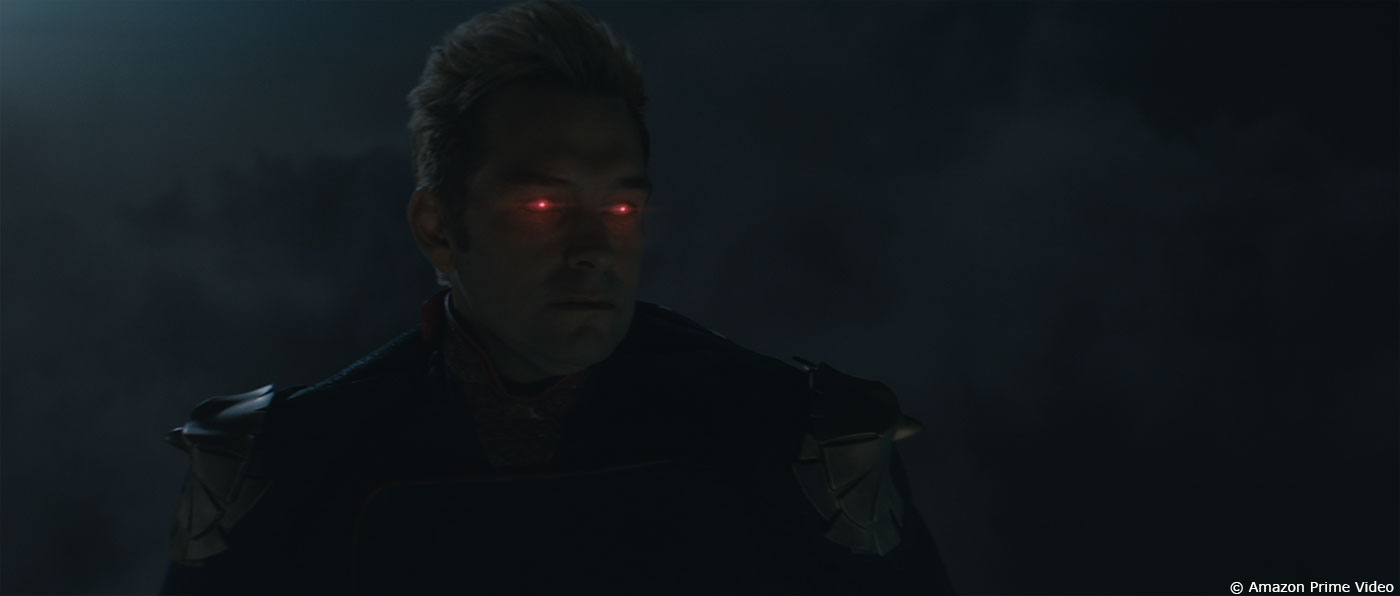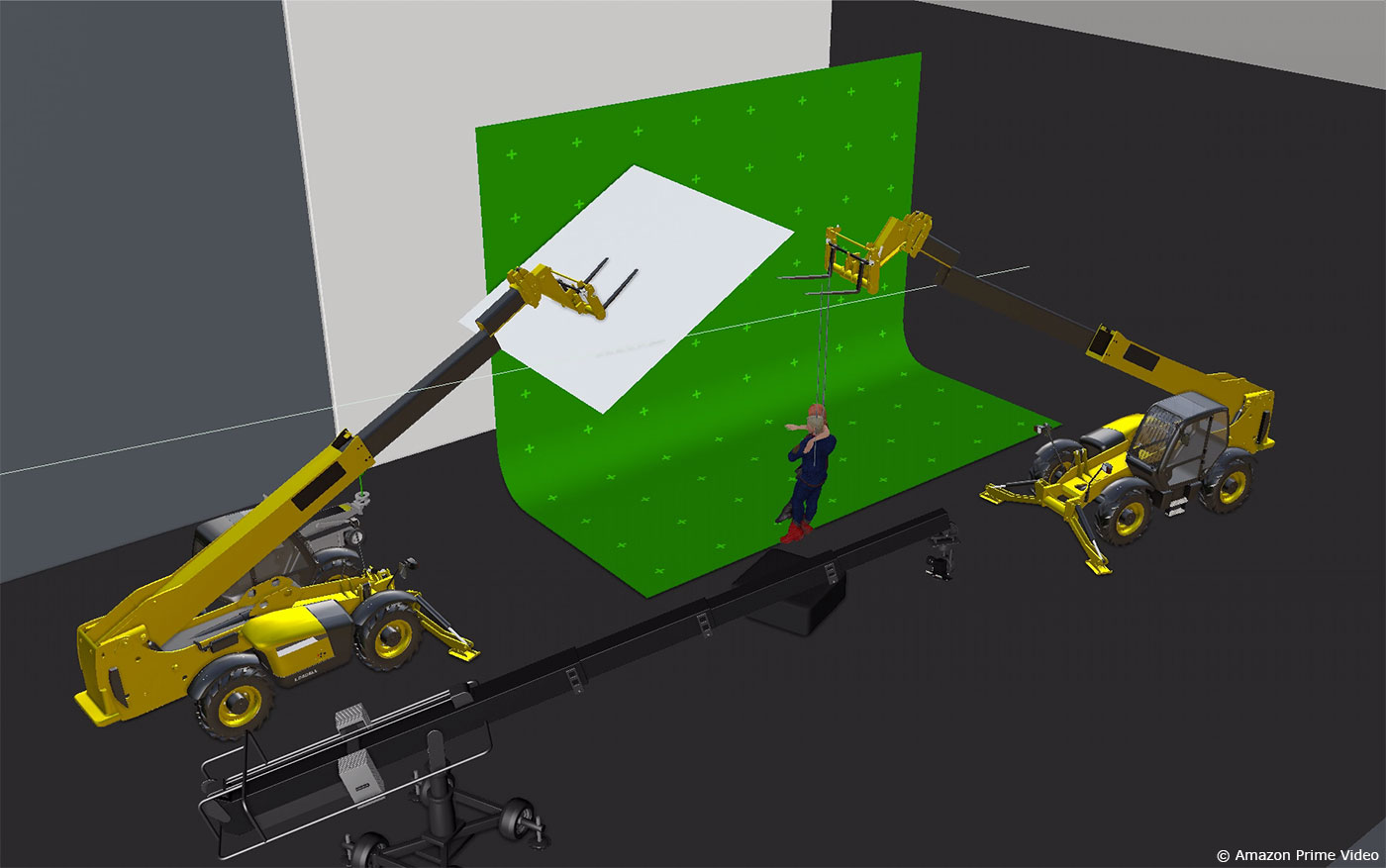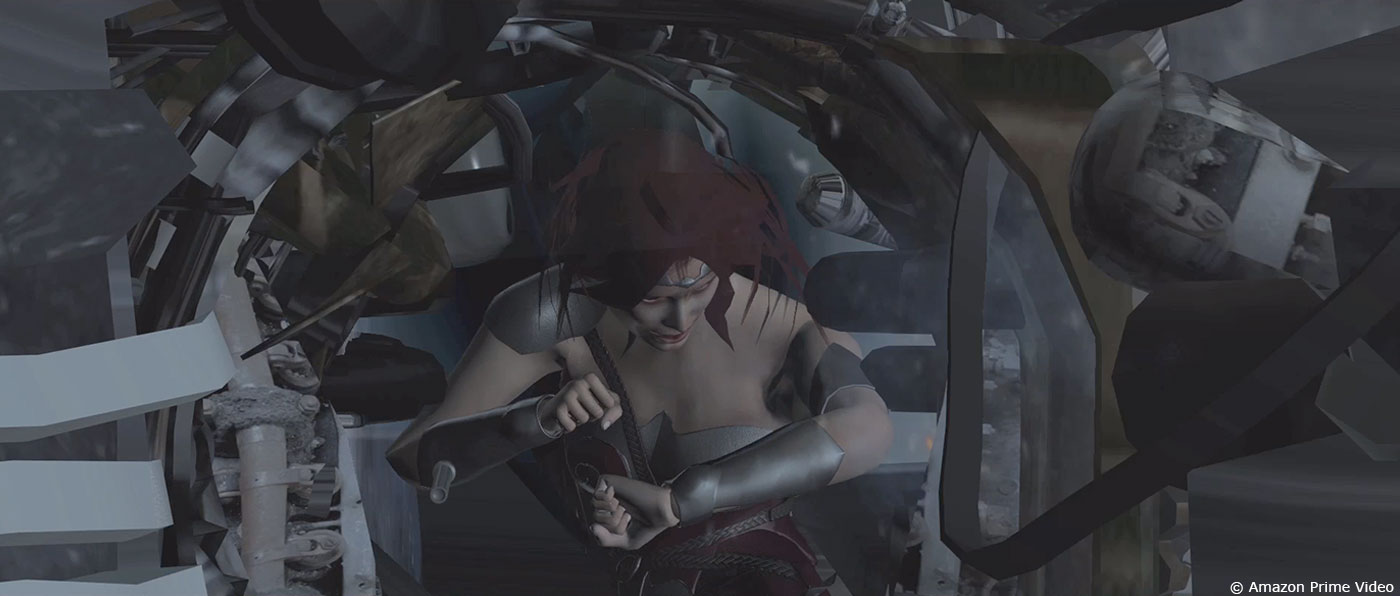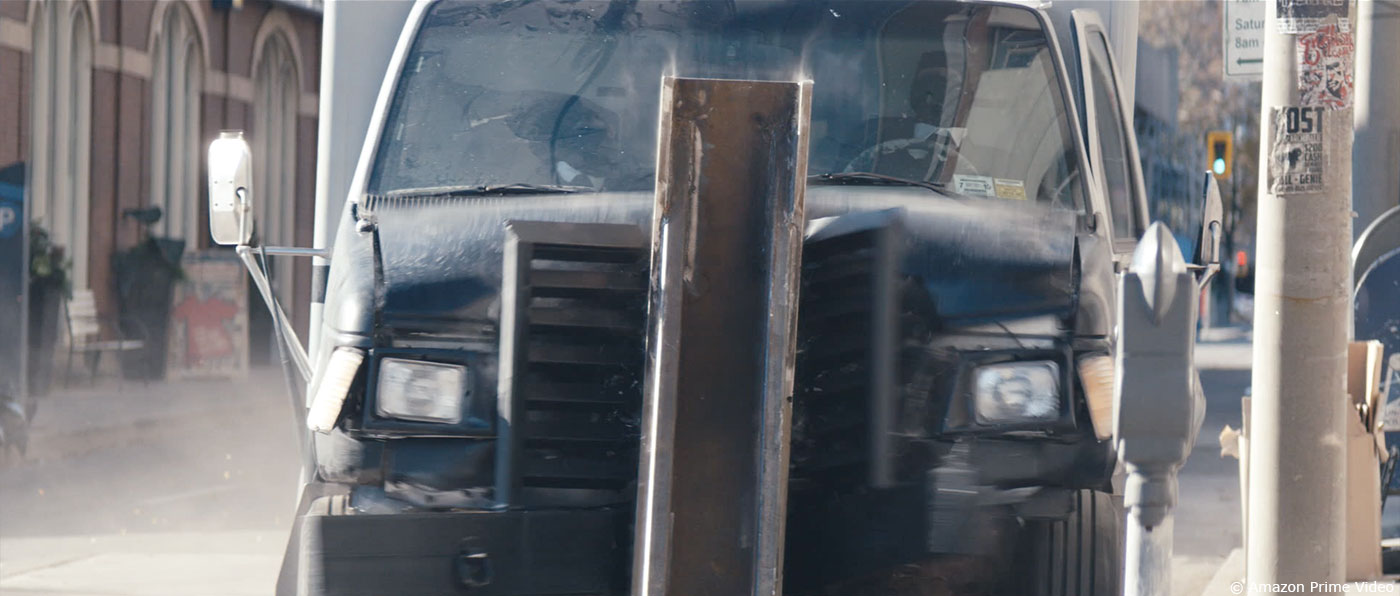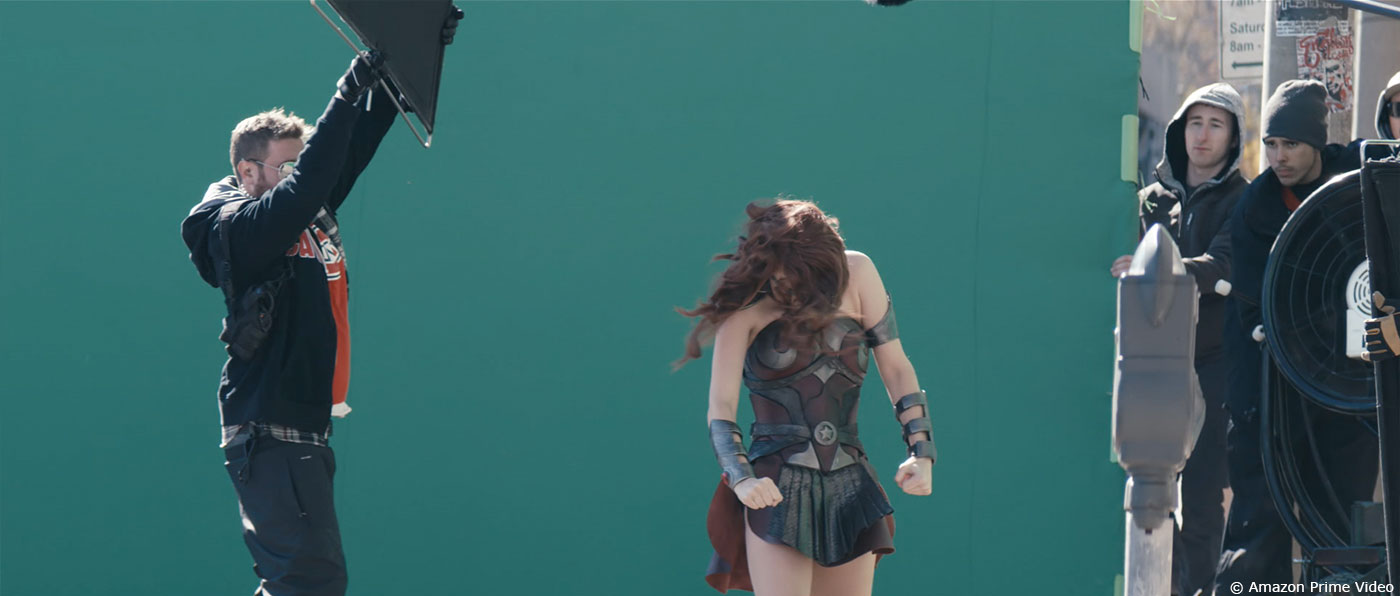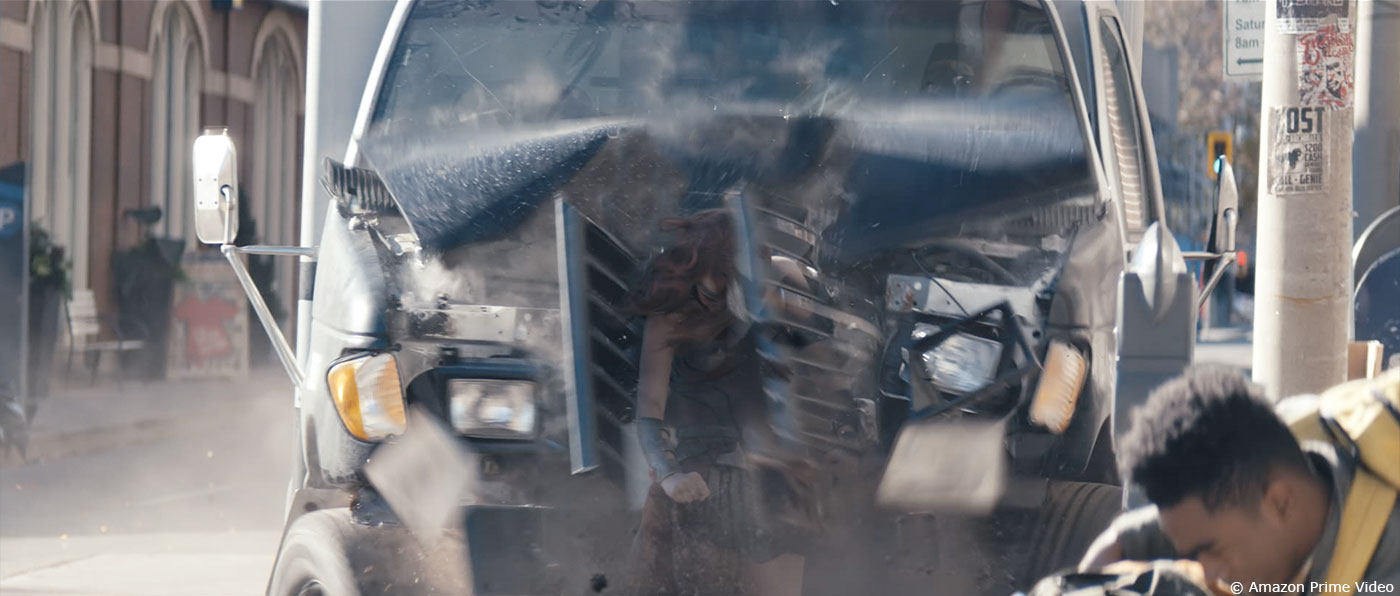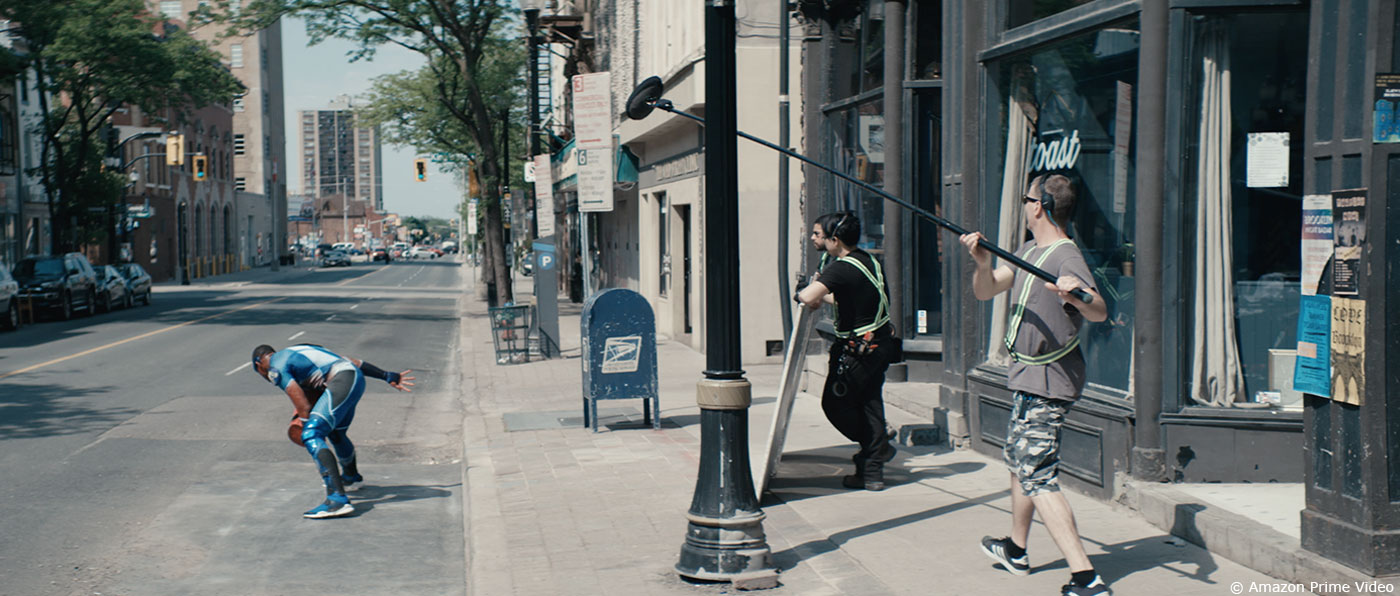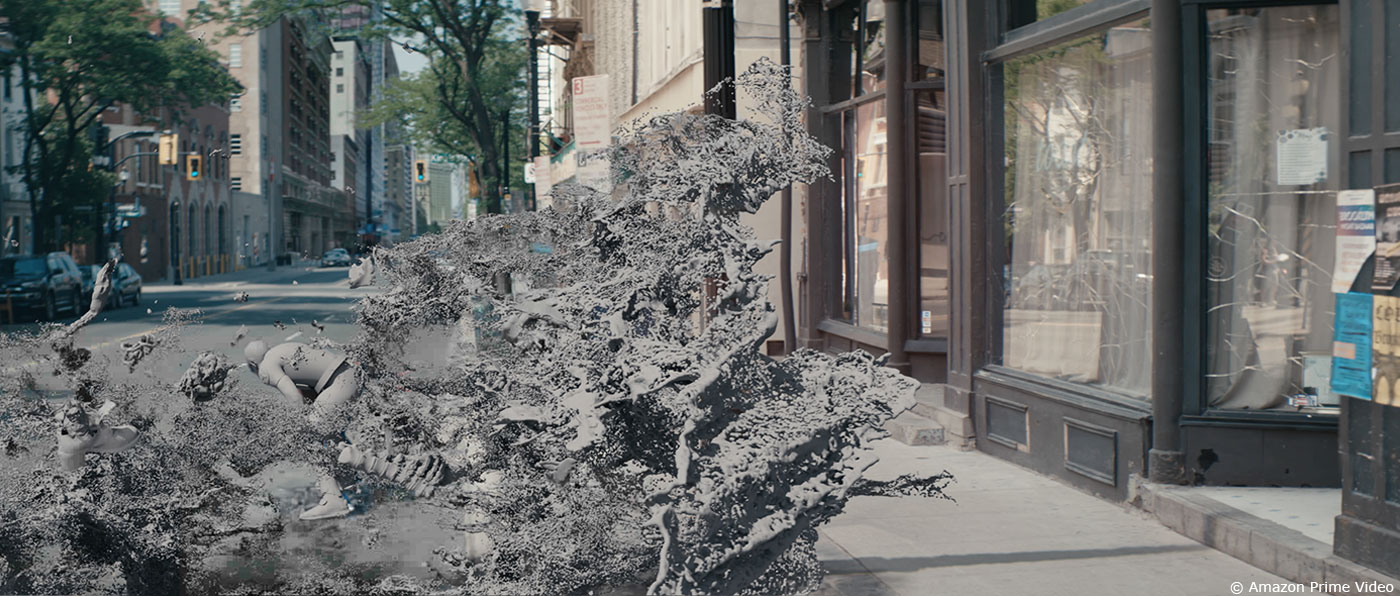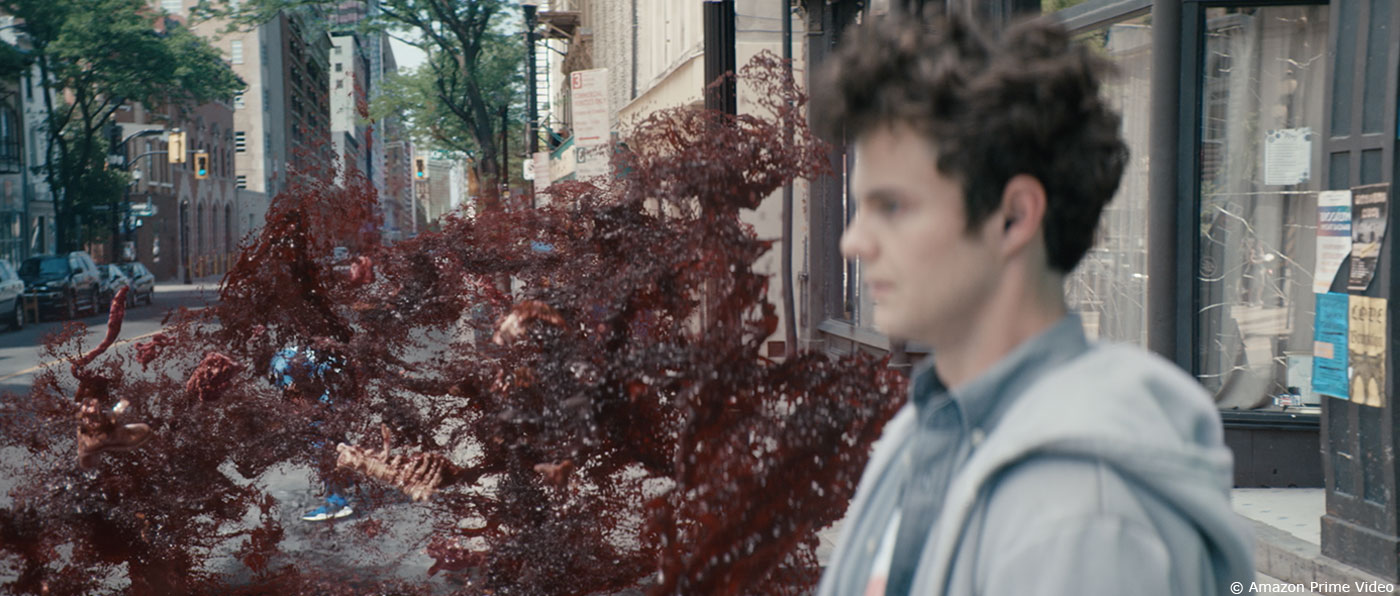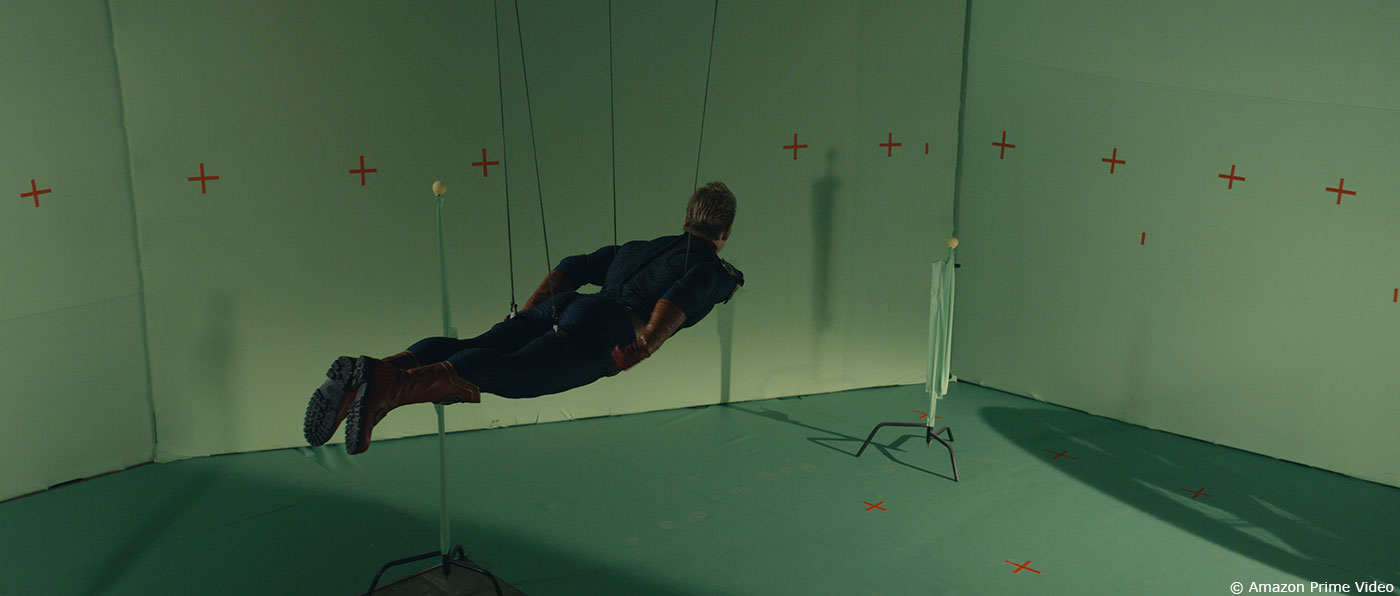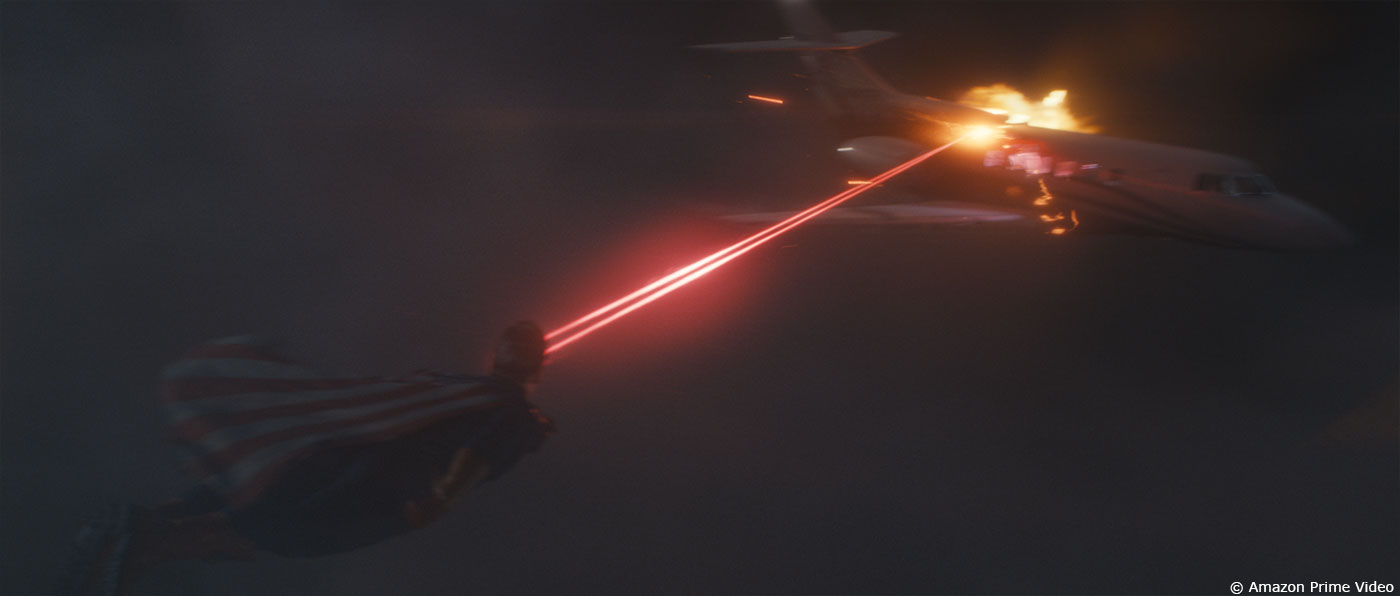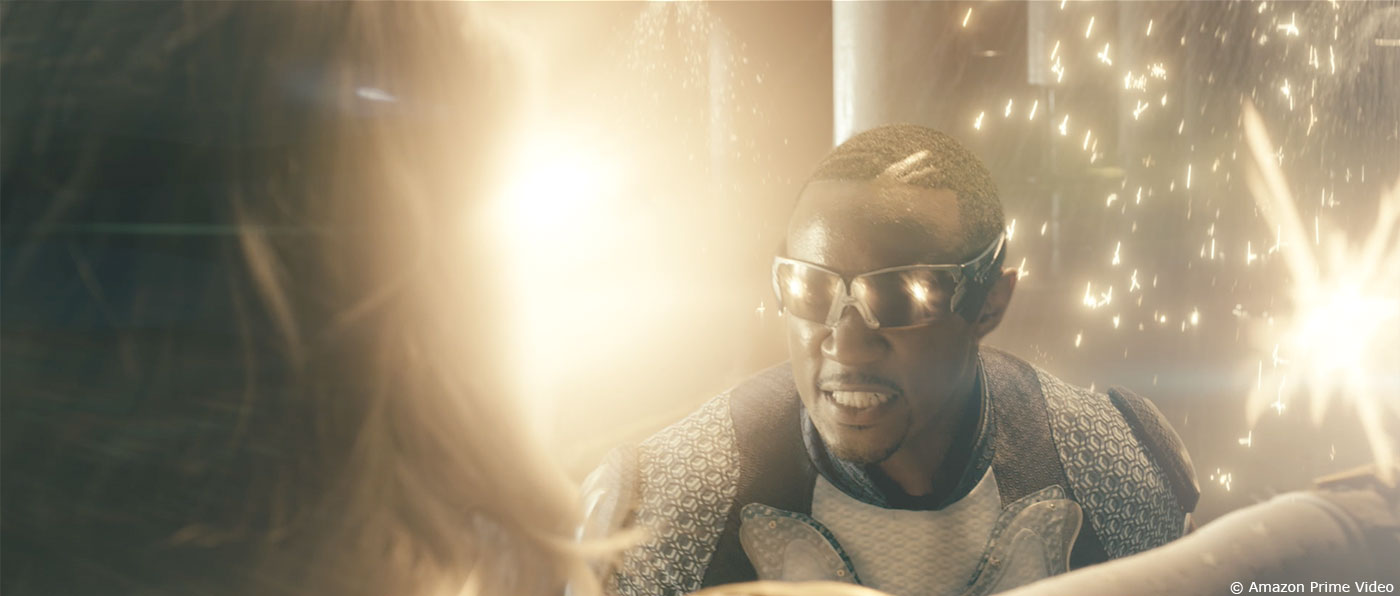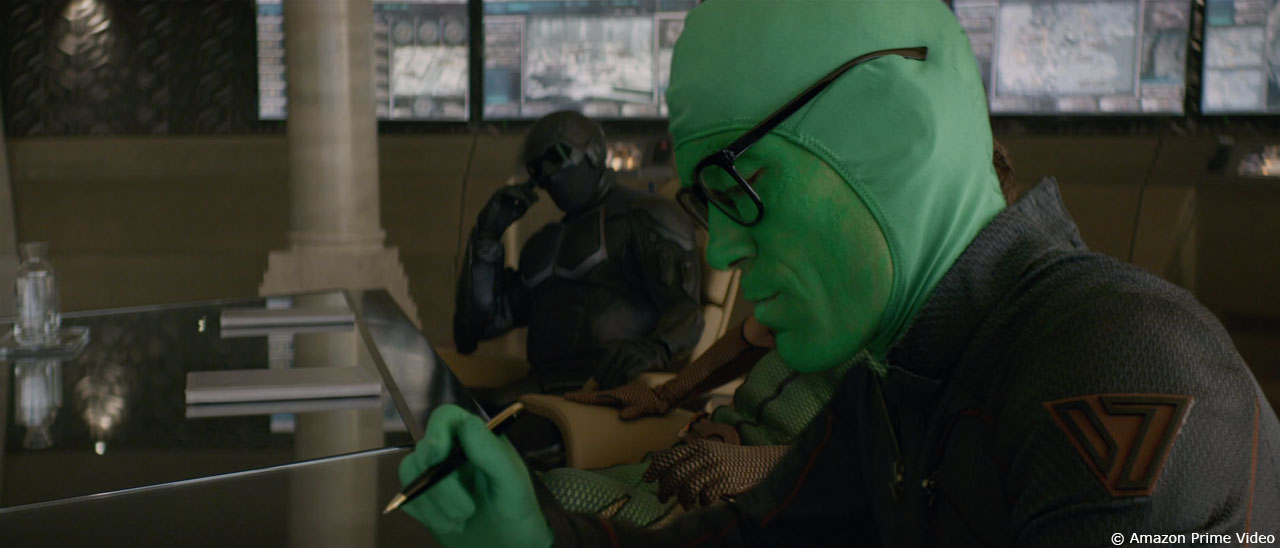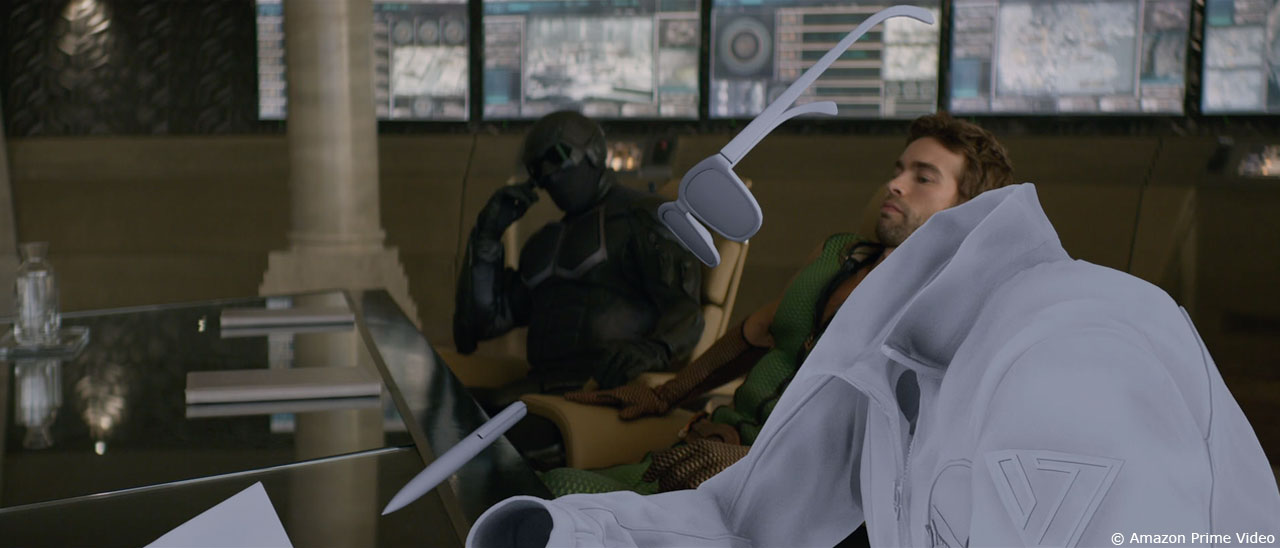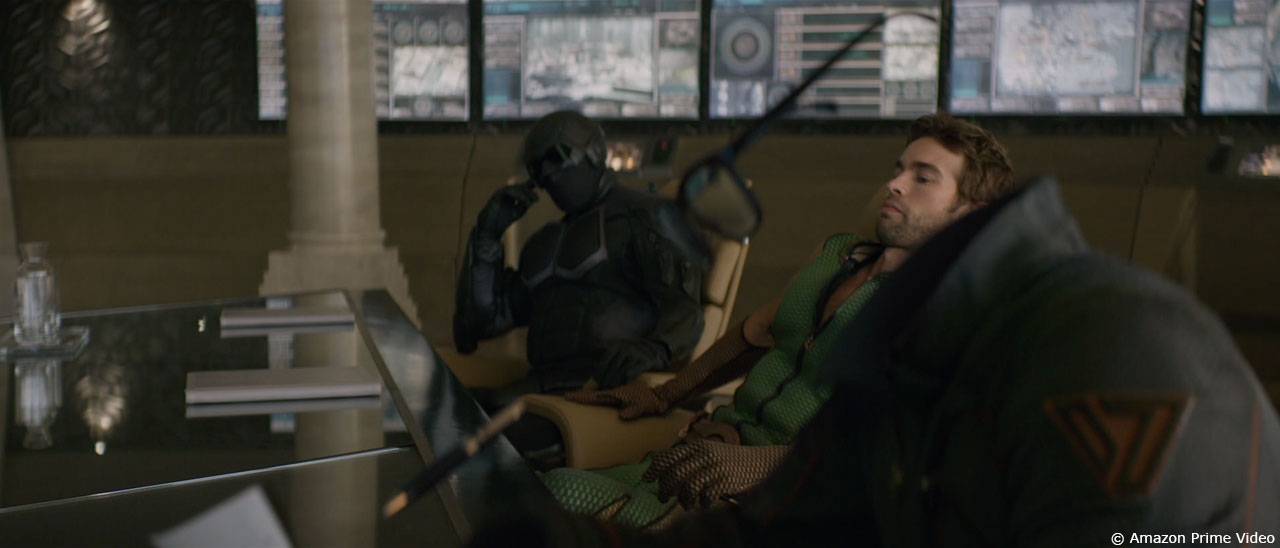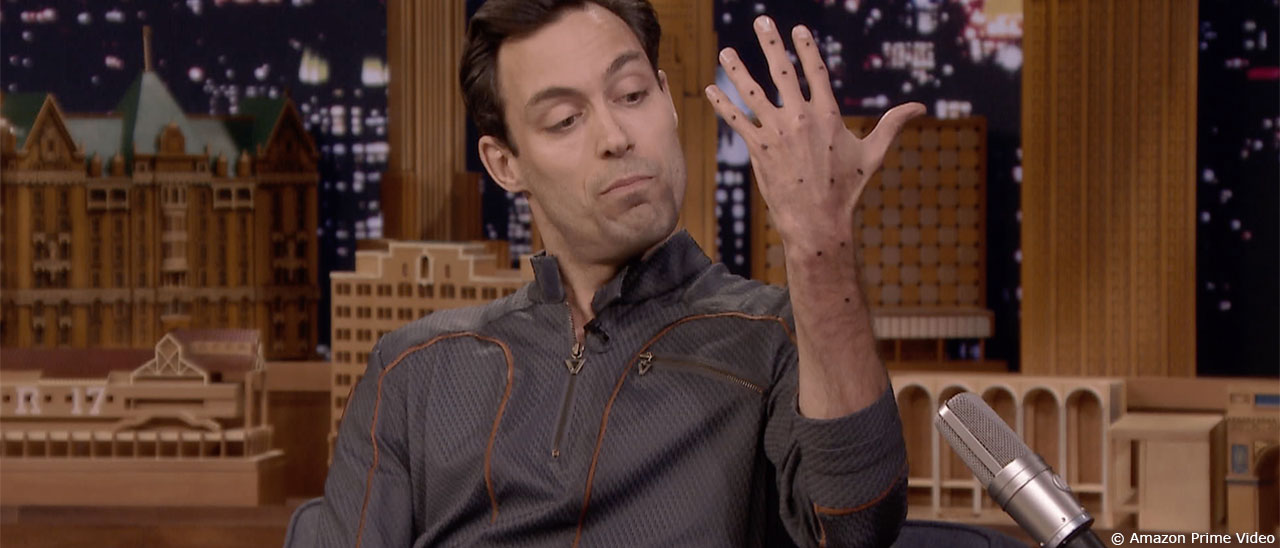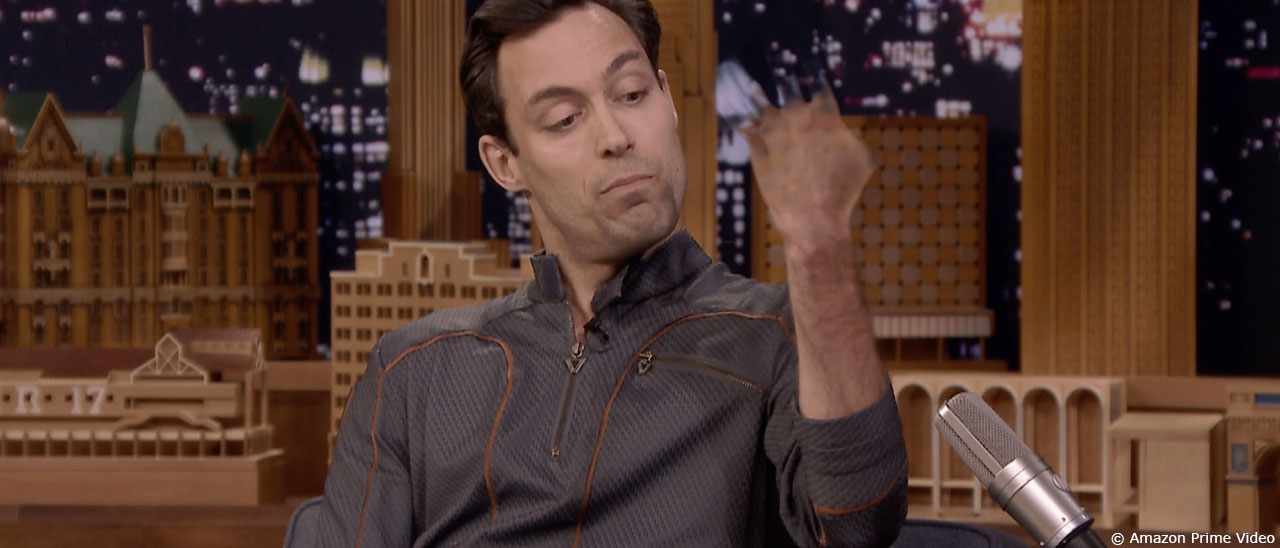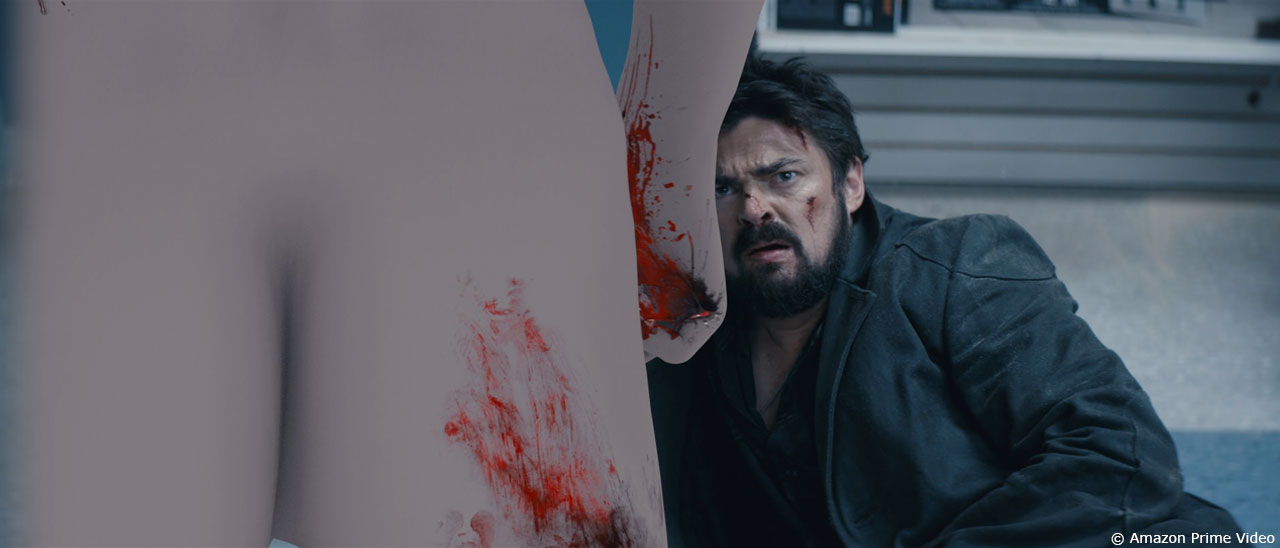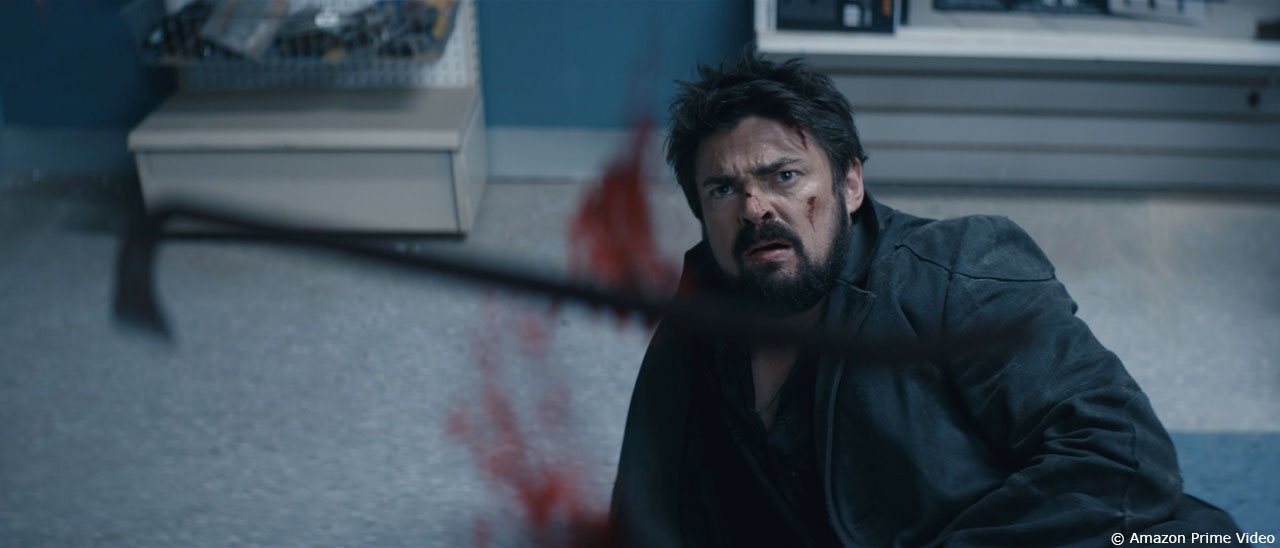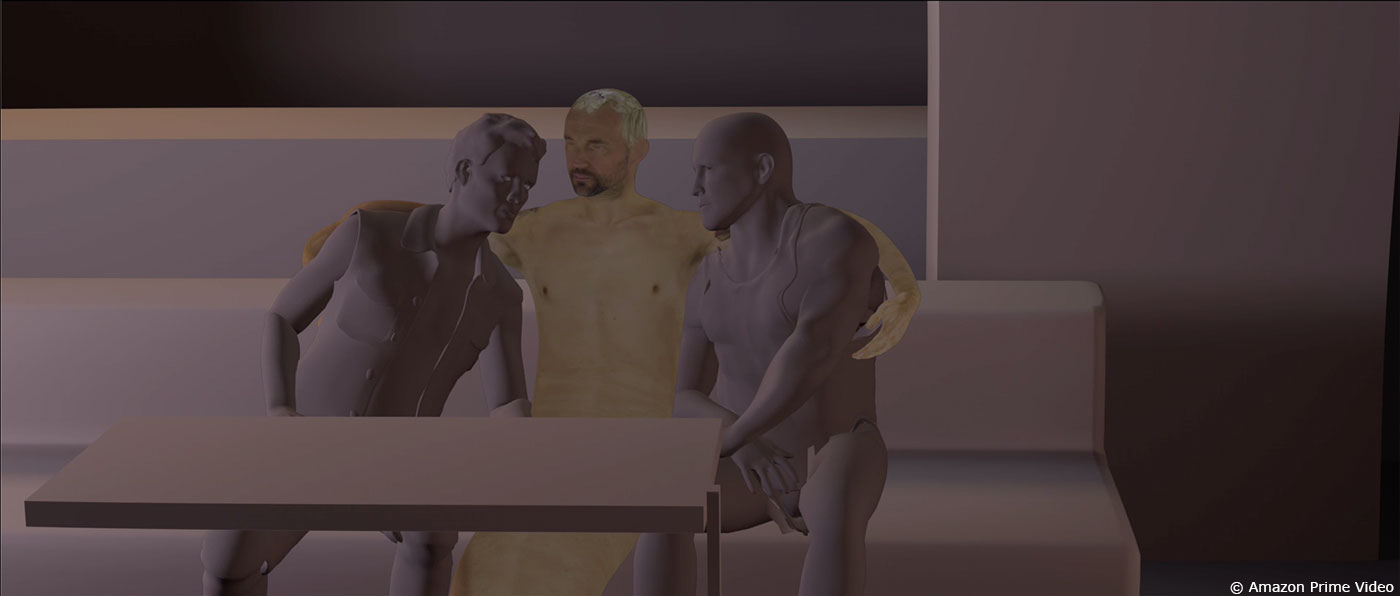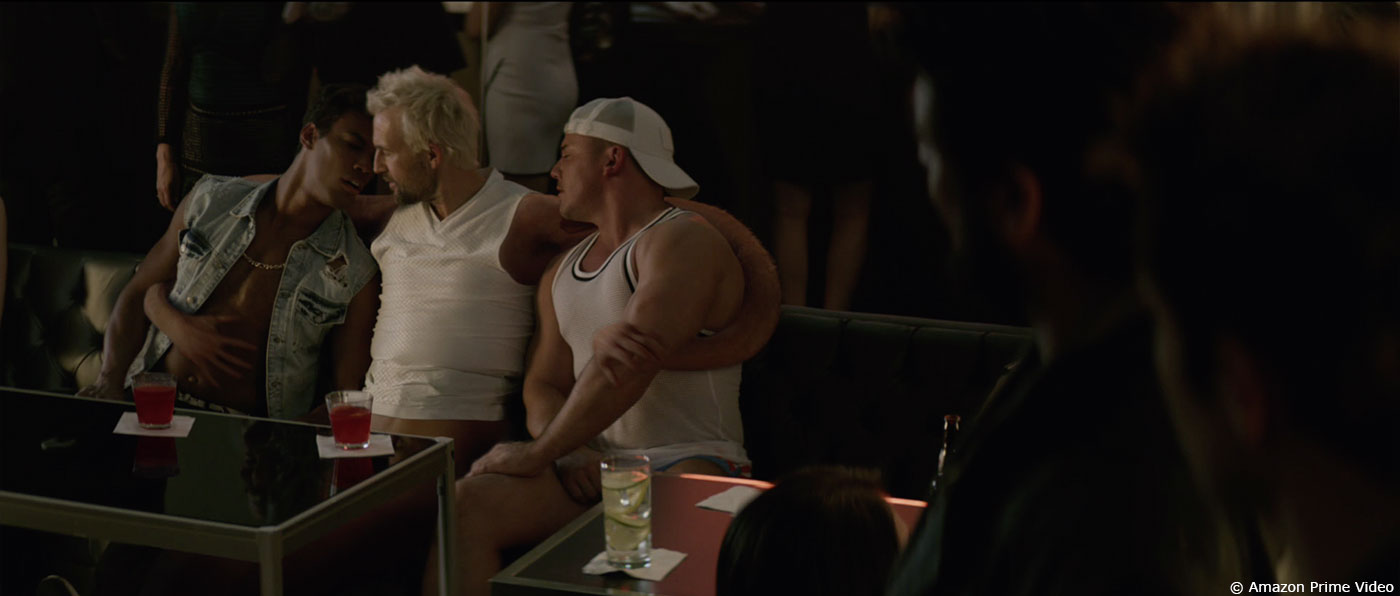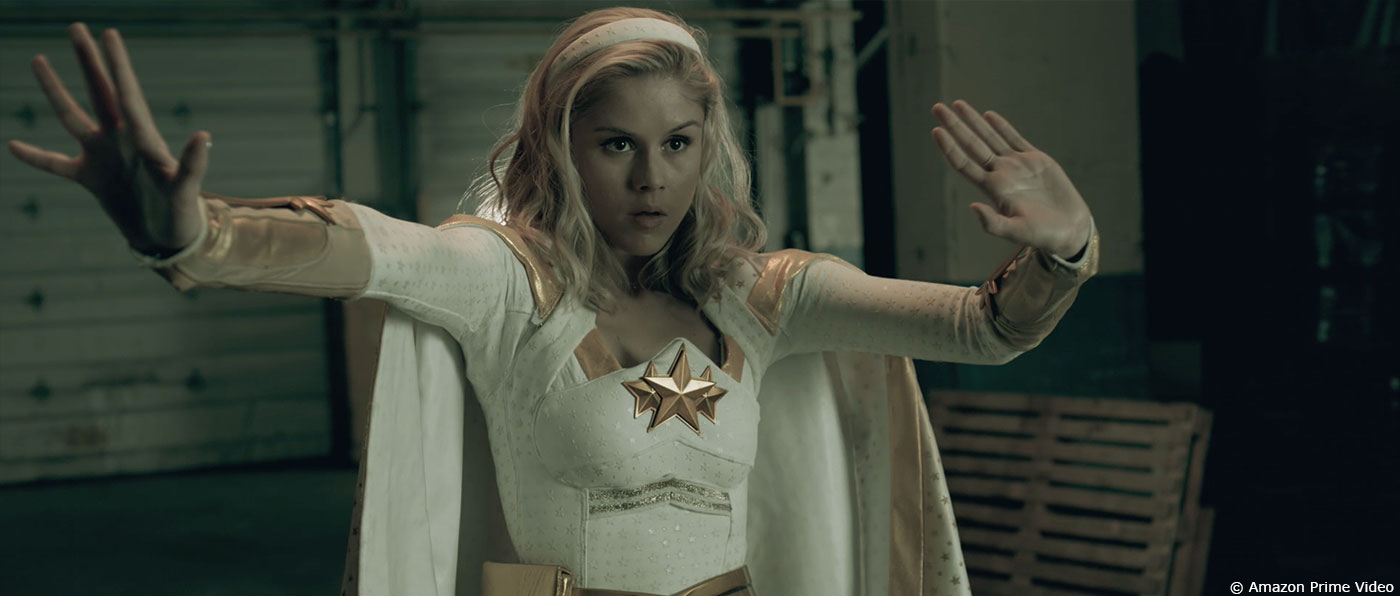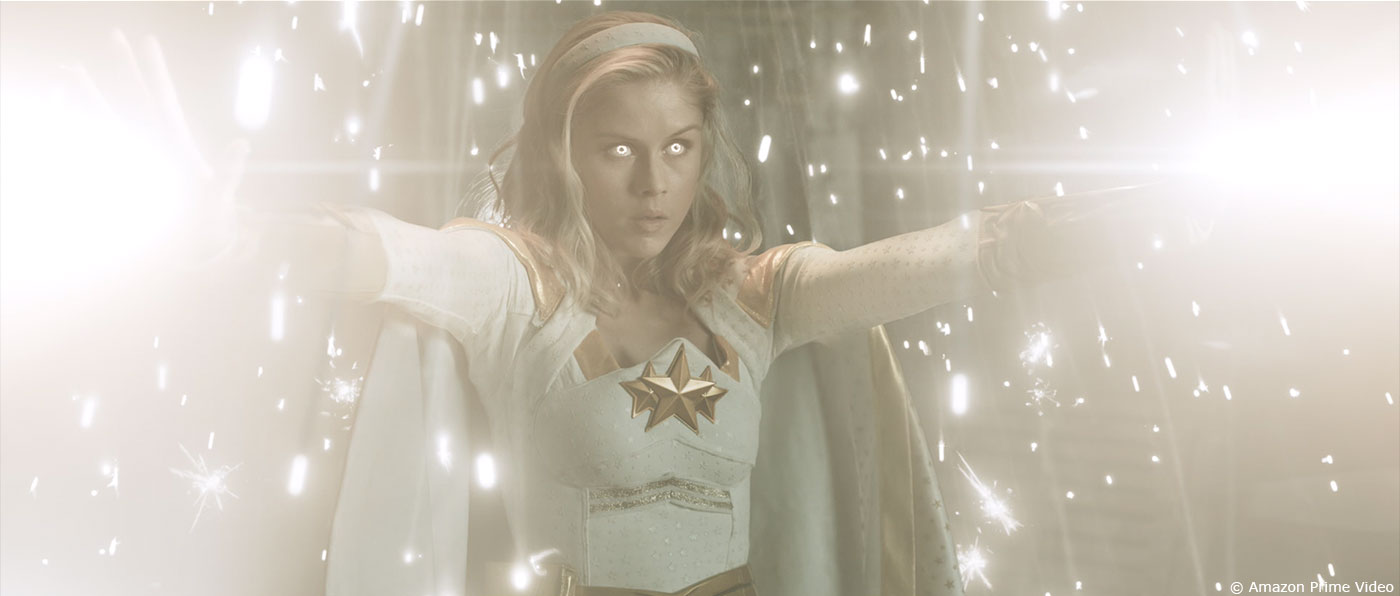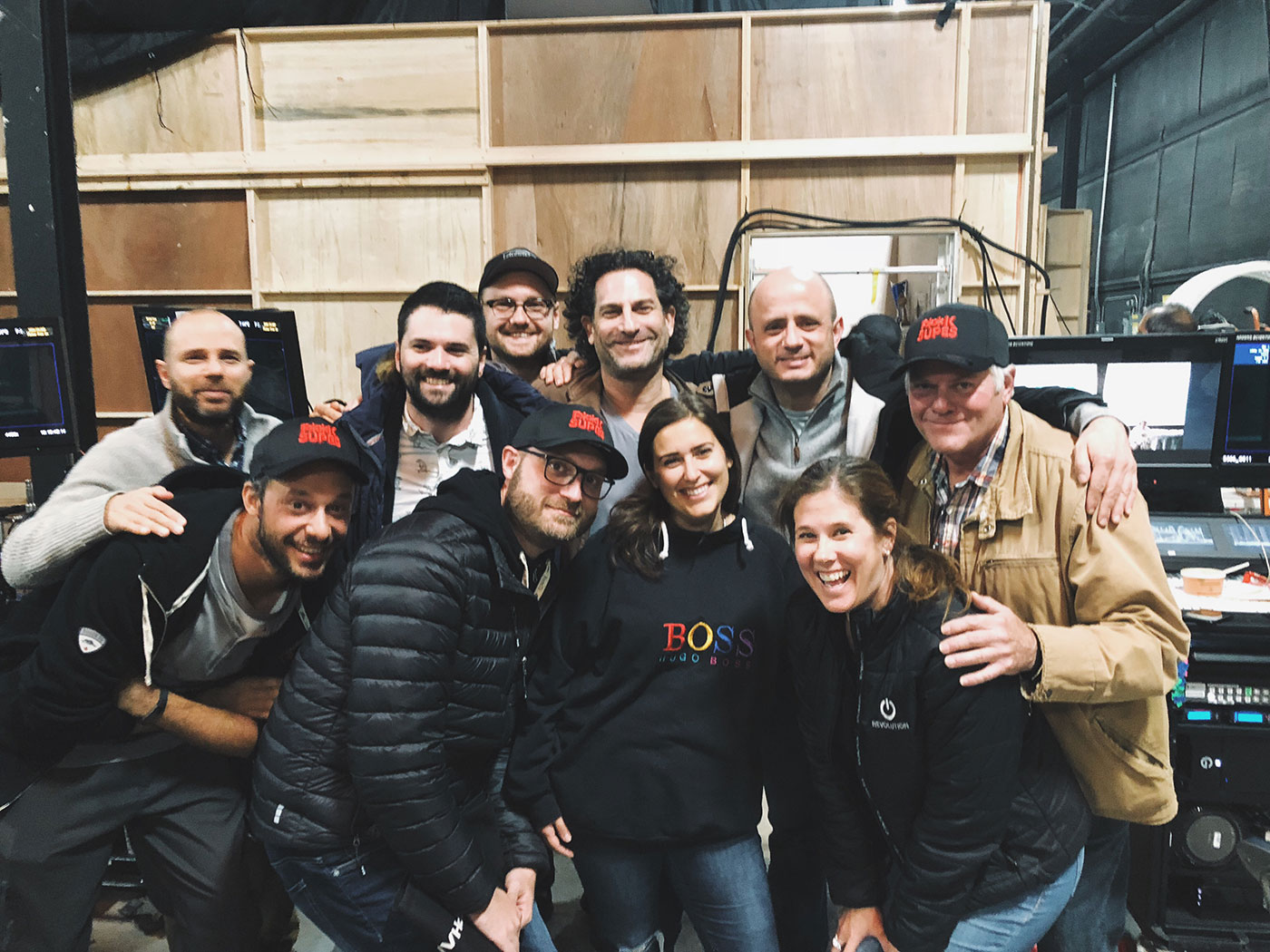Stephan Fleet began his visual effects career in 2008 on the TV series KNIGHT RIDER. Has Visual Effects Supervised on many shows including UNDER THE DOME, TIMELESS and IRON FIST.
What is your background?
I was born in Poland. I’m half-Polish, half-American. But I grew up in Los Angeles, mostly. My parents are both from the theater and cinema and I grew up in family of creativity and support. Believe it or not I was a child actor, I was in a movie with Christopher Lloyd when I was 6 years old!I went to theater school at UCLA, then film school for graduate studies at USC. I got a job working on a TV show while I was still finishing up my graduate studies. One of my professors at USC was a man named Ian Sander (who has sadly since passed), who, with his wife, Kim Moses, produced the show GHOST WHISPERER. They hired me as their “digital media kid” to help with ancillary stuff. Making myspace pages (lol) and eventually even producing a side webisode series. I attribute much of my true, real world television education to them and am grateful that they helped me start this long journey! After GHOST WHISPERER I ended up doing graphics and running 2D on KNIGHT RIDER 2008. My friends and I were the “in house kids” that ended up taking over the whole show and Developing a full blown VFX company. Somehow, after that I ended up a creative director and VFX Supe at Encore. About 30 shows later, here I am!
How did you get involved on this show?
A few years ago I had what I thought was a terrible pitch to Eric Kripke and Shawn Ryan for a pilot, then-called “Time.” They are two legends of television that I am still in awe of. I was a VFX Supe at Zoic Studios at the time. It was Christmas time and it was a phone pitch. There was an Xmas party right outside my office and I couldn’t hear them on my speaker phone! I remember literally pressing my ear to the phone… anyway, I was totally thrown but I guess they saw something in me. I went to Vancouver and handled a large portion of the pilot of what became TIMELESS. I had a great experience. I was already booked for Season 1. But Eric called me when Season 2 moved to LA and asked if I would be willing to come work show side. I said yes in a heartbeat, quit my job (I love Zoic, great people, but this was my path!) and that was it, my first real show-side gig. Eric already had THE BOYS in the works when S2 of TIMELESS started. So I waited patiently, crossing my fingers, for a call while kicking ass on Timeless, and the call came!
How was the collaboration with the showrunners?
One of my rules when I left to go show side was that I was only going to work with good people that value me as a creative partner. I’d say I’ve found that and more working with Eric, Seth, and Evan. 90% of my collaboration is with Eric. He is incredibly hands-on with VFX. He was here for production a lot during Season 1. He even directed the last episode. And then we would spend up to 2-3 hrs a day in post for months finishing this puppy up. We have a similar sense of humor. We’re both very sarcastic. So we laughed a lot in the room. Especially when some of the crazy scenes came up, like the Deep gills, or the fatal analingus head explosion. Beyondt thatwe really focused on just pushing the VFX bar as high as we could. We pushed each other to keep making things better. And by better I mean keeping things grounded and not too “digitally spectacular.” Cause that’s not our show. I would say I truly consider Eric a friend and a mentor. He really understands how to make a TV show. Every aspect of it. And he’s a good human being that values his staff and their contributions.
I did also have to interview with Seth and Evan for the role. That was super intimidating. They’re great, wonderful people. What I respected during the interview was how serious they are about making quality projects. They’re super funny guys, sure. But they know what they want. Their bar is high. We did argue about dogs vs cats for a little bit. For the record I love both equally 🙂
What was their expectations and approach about the visual effects?
During my interview with Seth and Evan, they looked at me seriously and were like – “we want this to be the best anti-super hero show ever, the bar is extremely high, higher than GAME OF THRONES high.” My choice then would have been to run in fear or embrace the rain and jump in. I jumped in head-first. I made a promise to Eric, Seth, an Evan that I would do whatever it takes to make sure we continually raise the bar. And that’s what I am doing to this day.
How did you organize the work with your VFX Producer?
I was in Toronto for all of production. I’m extremely hands on. I do a lot of my own previz, and I also was 2nd unit director on episode 3. Rian McNamara is my on-set supervisor here. He is on set 24/7, even on non VFX days, just in case. I show up for bigger shoots. We also often shot 2 units at a time and then we split the work. We don’t have a traditional data wrangler role. So Rian also handles all the data. I wrote my own app for the iPhone that lets us get a lot of that data fast while also doing heavier supervisor tasks. During filming Phillip Hoffman (VFX Producer) and Dominic del Castillo (VFX Coordinator), were in LA getting logistics and financial stuff underway. Once I came back, it was a bunch of cineSyncs and reviews, non-stop, for a really long time. Phillip handled 90% of the finances and vendor logistics, while Dom, handled shotgun and note flow between myself, VFX editor, and vendors. I couldn’t have done it without them!
Can you tell us more about the previs and postvis process?
Mr. X did a lot of the previz for the pilot. Dan Trachtenberg uses previz quite a lot. So they graciously lent out two artists that I set up in my office to bang out the work. They did the Sex Club sequence, Robin’s death, and a few others. The opening of the show with the bank heist was shot at the end of our show schedule. For that, since Dan was in LA prepping, we turned to The Third Floor, who did a phenomenal job with the previs. It’s more than just animating some shots. They have a lot of support staff that helps you shepherd in and focus the storytelling. Then, like I mentioned above, something that I think is unique about me, is that I do a lot of my own previz and tech-viz. It’s just part of the way I think. Over the years, I’ve developed tricks and shortcuts using C4D, redshift, some scripts and virtual film gear that I’ve modeled, and various other tricks to design scenes and shots. If I am able to go on a scout and get the coordinates of a location, I can build a proxy and previs shots pretty fast. For example, the scene in 104 *SPOILERS* where Homelander and Queen Maive exit the plane. I previs-ed and tech-vized that to a T. I knew the space we shot it in, what gear we would have, what wire rigs, telehandlers, all of it. So when we shot that sequence, the technical set up was extremely fast, allowing us to focus on the creative. I also prevised that end fight between A-Train and Starlight myself. When everyone read the script they all turned to me and were like “how we gonna do that?” lol. So I rolled up my sleeves and just… did it. I was there on set with Eric, side by side, using that previs like it was the bible! For me, I go in to every sequence, every complex puzzle we have to solve, assuming 50 things will go wrong. If I can anticipate and knock out 35 of those 50 things with previs, that’s pretty good odds! That’s not to say things don’t change on the day. They should. It’s important to listen to the actors and the director and organically adjust to make things as believable, emotionally, as they can be. For postvis, there’s not too much of it. We will drop in our previs as temps in editorial, and our VFX editor, Dane, is amazing at drumming up AVID temps.
How did you work with the art department to design and create the various super-powers?
The Art Department designed the initial plans for the 7 Tower, and Dave Blass and his team were extremely collaborative with VFX. They created multitudes of graphics and photos that we used to help flush out the world. All of the super powers were designed in VFX with massive amounts of R&D. I mean massive amounts. We started as soon as we could, and were feeding the crew stills and visuals as they became ready. The amazing part of this show is we are our own universe. We’re not beholden to the rules of the DC or Marvel universe. That also means we have to invent everything from scratch! And what Eric always wants is the most real, believable interpretation of a power. A lot of “what would a super-power look like if someone really had it, in this world?”
The show has many super slowmo shots. How did you approach those shots?
Robin’s death in 101 was one of the most intricate shots I have ever worked on. We used a Phantom camera shooting at 480fps a second mounted to a Bolt Arm that could do the camera move in just about 2 seconds. We did 11 passes and it took us almost all day. Mr. X helped us previs that shot and DNEG Vancouver/LA did the actual final product. Most of the credit goes to Dan Trachtenberg, who has this way of finding shots and pushing the envelope of storytelling. He really invented the concept of this bullet-time reveal of her death.
We had one other major Phantom sequence, in 104, when A-Train is running in a tunnel clutching the Female. It had to be Phantom because we needed to see the action for storytelling reasons. That was all shot on a green screen and the tunnels were CG, also done by DNEG. The rest of the show was all Red camera, up to 96fps. In a lot of dark places, you can’t shoot at super high speeds or you need a massive amounts of light. There’s a great shot in the subway where you see A-Train and The Female down on the tracks, and a multitude of bystanders, near frozen, in the FG, as we track with them. This was some old-school trickery. We just had all the background talent and cast act at 1/4 speed while A-Train booked it as fast as possible. Totally works! Same goes for that A-Train/Starlight Ending. All red camera. Some sticks and rigs to hold up Hughie and Starlight that we painted out.
What are the main challenges with these slowmo shots and especially with a change of speed?
Well, light. You need a lot of it. Then with the Phantom you can only shoot in bursts, so timing the action. Then, I guess, playing back dailies, it takes forever, lol. Of course, the biggest challenge in VFX is that you have really, really long shots. Thousands of frames to deal with.
Let’s talk about Homelander. How did you manage the challenges of his flying shots?
The first shot we did with him was the one where he lasers that plane in half. It’s a lot of green screen work. I have a motto for the tone this show – as little green screen as possible. But in this case, it was absolutely necessary. We were just getting the show up and running, and there were a lot of tough kinks to iron out.. It’s not easy for an actor to dangle like that. And his suite is super hot! There’s actually a cooling system built-in! Which is awesome. We have a super suites department, lead by Laura Jean Shannon, that just do amazing work! Anyway, the answer is it took time. I realized then I needed to get more specific in my previs and knock out technical issues. Show stunts, Super-suites, Special Effects, Grips, etc a road map. Also, it was really important for me to free up Antony Starr (Homelander) to be creative. One of the worst things you can do as a VFX Supervisor is try and box actors in to some kind of a technical situation. That leads to fake, uncomfortable stuff. Nope. I needed to show up on set and be able to show Antony what we were doing, then give him the freedom to bring his character in to it. He’s an amazing actor that really comes prepared. By mid-season, I think there was a mutual trust and all departments involved pulled off some really complex stuff.
Can you explain in details about his deadly eyes laser beam?
This one was pretty simple. DNEG did a bunch of R&D and landed on a look that Eric and gang loved. We showed a shot to Antony once it was approved, and I’m fairly certain he can visualize his lasers when he acts. It’s all really about the performance. Now the slicing people in half – that’s a whole different story!
From a technical standpoint, I don’t want to speak to the intricacies of how DNEG, Pixomondo, and Rocket Science did them, but I believe it was a mixture of 3D for foreshortening and perspective with a lot of comping to get the look and the falloff right. We wanted some volume to them. We also really liked the anamorphic flairs off the eyes (we are an anamorphic show), so that became a bit of a signature.
Can you elaborates about the death of Elisabeth Shue character?
Yeah, Pixo Toronto stepped in here. I worked on a pilot a long long time ago (The first LOCKE AND KEY) and we had a character in there that had a gruesome face, with a lot of inward depth to it. I showed them that shot and then we really started exploring from there. We talked about depth and seeing the back of the skull. How we wanted the skin to crisp away and see eye-goop drip down. Then, honestly, I thought these close ups would be the hardest thing ever, but Pixo just nailed it. I would say about 5-6 rounds and we were done. They just had their thumb on the pulse of what that needed to be!
How did you create and animate the Homelander cape?
That was all DNEG! Often times we would do a blend. So when Homelander lands, we would have two people hold up his real cape with fishing line, he would jump and they would drop the line. From there we would blend a digi-double dropping down fast in to real HL. We try and avoid seeing digi-double too clearly or for too long on this show. It’s not our tone.
A-Train is the faster man on Earth. How did you help him to do that?
Often times with a digi-double. Sometimes with camera ramping. But mostly a digi-double. DNEG to the rescue, once again! On set, Jesse (A-Train) would simply take the last few steps of his run in to a shot, and we would do the rest leading up to it. We would add CG papers around him or dust kicking up to add realism. We didn’t want any electricity or anything too fantastic here. Cause again, we’re trying to nail this sort of toned-down, throw away VFX style with our supes.
Translucent is another challenging character. Can you elaborates about the shooting of his invisible shots?
Oh yeah. Mr. X rocked this one out. When I first read the script, I was excited, but also my heart skipped a few beats. Originally, it was an invisible man fight under fire sprinklers. Then it became about the blood spitting, which was way better to accomplish in VFX. For the big fight, we had a stunt double in a gray suite do a reference take of every shot. In some cases, like when Hughie gets picked up, that’s our double, Moses, really doing that, then being digitally removed. For Butcher vs Translucent – I have to hand it to Karl Urban here. He rehearsed the fight with the double, then was able to do all the action himself, fighting against nobody! He’s a total pro, he showed up prepared! In post, it became all about the amount of blood. And the depth and viscosity of the blood. Normally, we stay super grounded in realism. but we realized through the process that we needed to get hyper-real and amp up the amount of blood for legibility. Then we started adding drips and splashes to bring in some more realism. It’s all CG. Even the stuff Butcher spits.
For the conference room scene. We had the actor, with green make-up, act out the scene. Then we did some poor man’s moco (just tried to get clean plates close to the original move). For that big wrap around shot, most of his uniform is real, the glasses and pen are CG, the insides of the uniform and the seams near his neck are CG. Then for some of the wider shots it’s all CG. I love that wrap around shot. It’s a great opportunity to tell a story THROUGH a person’s head, using the invisibility as a motivated, compositional motif. And seeing the distortion through the glasses lenses just adds that special touch.
For the Fallon scene. That was crazy. I waited in a green room till they finished filming the actual tonight show. It was fascinating watching the behind the scenes of how they make a show like that. It really did feel a lot like the show 30 Rock back there! Side note, the green rooms are all themed and I was in the “bird room” – it was super creepy with all these pictures of birds everywhere and stuffed birds on the fire alarm and such. Anyway, we didn’t have much choise there, we had about 20 min with Mr. Fallon to film the scene. He was super professional and they just recorded it like a real skit. I made sure Translucent’s hand never crossed in front of his face so that we could paint out his arm and bring it back.
How did you design and create the animation when he become translucent?
Mr. X. With just… a lot of R&D! I had done some research on carbon fiber, and we went down that road first, but it felt too much like a suite or mechanical thing. It ended up being a lot of trial and error.
How did you work with the SFX and stunts teams?
We have the best in both departments. Tig Fong is our main stunt coordinator, and a real pleasure to work with. He previses his own fights. In that he films and edits them with his stunt doubles before we shoot them. So often I get a road map from him for any fight sequence. Likewise, any previs or concept stuff we do in VFX would go to him. The Kenny family (led by Tony Kenny) picked up our SPFX starting with episode 104. They also did that opening where the truck smashes into the pole. I have the distinct pleasure of having done a truck smashing into something invisible before (UNDER THE DOME) and for this show I knew it had to be a real truck. So they went out there, got a truck, built a rig, tested it, and crushed it! We have all of our meetings together on the show. We’re all friends with a lot of mutual respect for one another and our departments. We are open and honest with what we can and can’t do. And that’s the way it should be on any show!
Which stunt was the most complicated to enhance?
I mean, that would have to be the Translucent Fight. It was complex for all parties involved.
The show is really gore. Can you tell us more about this aspect and your work on it?
Yeah. That’s the tone. I actually, weirdly, think it’s less gory (in a good way) than I originally thought it would be. I thought it would just be buckets of blood like a B-movie. We’re quite careful and art direct our blood very seriously. We also enjoy hitting Jack Quaid with cannons of blood at least 3 times a season, lol 🙂 But hey, it’s THE BOYS. It’s about violence and blood. We cut people in half with laser babies. So we put on our gloves and get sticky.
A lot of the blood is practical. Also a lot of it is all CG. The robin’s death shot ended up being 100% CG blood. But the translucent explosion is 100% practical! For CG blood, we used the practical as a reference. It was about dialing in the thickness, viscosity, hue, and specularity.
Where was filmed the various parts of the show?
The show is 99.9% shot in Toronto. Practically my second home now! I love the people and crews out here. I had the distinct honor of going to NYC to supervise the filming of one scene, which was Translucent at the Tonight show. I got to go to 30 Rock and film with Fallon, it was surreal.
Can you explain in detail about the design and creation of the 7 Tower?
Dave Blass, production designer, really had it mapped out for us. From there, Brendan Taylor and his team at Mavericks, here in Toronto, really did a kick-ass job of making it look real. The first shot we did was an aerial shot where we dropped it in to NYC in the daytime. A lot of it was about the reflection and softness of the CG.
Can you elaborates about the hilarious and tragic sequence with the Dolphin?
Yeah man. One of my favorite things I have ever done is shoot that scene. We shot it late at night with a second unit. Special Effects made this cannon that shot a green dolphin out the window. It was kind of amazing and reminded me that I get to do stuff that not many other people get to do. In terms of VFX in post. Kinda like the Stillwell face, I thought this would be one of the hardest things to do. But Soho VFX just really nailed it! It didn’t take more than a few passes to get it right. Their animation when it hits the ground is money. That’s all them! They came up with that!
How did you choose the various VFX vendors?
We started with a core 5 vendors. Trying to keep most of the work in Toronto. Which was great, cause I was in Toronto and could visit in person. But then in post we quickly realized the show had grown enormously and we brought on a few more houses. I couldn’t meet with all of them, but they did amazing work! I do my best to meet with most vendors in person, as much as possible. Time and location permitted.
How did you split the work amongst these vendors?
We started splitting stuff up by super hero power. We ended up bringing on vendors as specialists for heavy one-off sequences to release the steam valve.
Can you tell us more about your collaboration with their VFX supervisors?
Yeah, I mean look, it’s all about the vendors and their VFX Supervisors. I come up with these crazy ideas and do my best to provide a creative plan and a technically sound canvass… but like 90% of it is their contribution to the show. I’m old enough now to realize I don’t know everything, lol (I sure used to think I did!). I really empower and embrace companies and supes and artists to bring their creative ideas to the table. The best conversations, for me, always revolved around concepts and creativity. There’s nothing more pleasurable than having someone share ideas with you, that you can tell, they have deeply thought about and invested themselves in. If I have one word of advice for up and coming supes and artists, it’s don’t be shy sharing an idea or an opinion. I couldn’t have done it without the unimaginable amount of hard work from the VFX Supes and artists and all the facilities involved. I know there were a lot of late nights. I’ve been there. I have nothing but gratitude and respect for every single individual that contributed to our crazy narrative.
Which sequence or shot was the most challenging?
Hand’s Down, 100% Robin’s death. It took us just about 7-8 months to complete. It had to do with conceptualizing what she would look like. I have so much respect for Dneg for handling that journey with me. It was a tough birth, but well worth it..
Second hardest shot was Doppleganger. The dude… er… girl… on the bed with the senator. That was a big, crazy, motion control morph shot.
Is there something specific that gives you some really short nights?
If I could tell you some of the things we have cooked up in Season 2….haha. I like to get to set really prepared. That’s hard on a tight schedule. So sometimes my brain wont turn off thinking about the next thing. That being said, it’s unhealthy to work 18-20 hrs a day. I’m coming to grips with this myself. I urge everyone to find a balance. I’ve found that meditating and finding ways to relax WITHIN the job, have unlocked more creativity.
What is your favorite shot or sequence?
I love so much of it! I love Robin’s Death, the Dolphin, all the plane stuff, the Stillwell face. But, really, every shot has a memory, a story, a journey attached to it. These are the experiences that make it worth it, man. I love it all!
What is your best memory on this show?
Again… sooooo many. I took some of the production crew out for drinks at the end of last season. Watching them laugh and relax and enjoy life was invigorating. You have no idea how hard these guys work on set. They are truly the foundation. If I had to choose a moment in post, it’s probably the first time we showed Eric the scene where Popclaw, er, squeezes the guys brains out. We did some enhancement there (Rodeo FX), and Eric just could not stop laughing. Some of the things we have to do…
How long have you worked on this show?
Probably, er, 1.5 years now.
What’s the VFX shots count?
About 1500 shots, I believe, if you count fixes and everything.
What was the size of your team?
6 people for Season 1. I now have 8 people in Season 2.
What is your next project?
This! I am already 2 months in to Season 2!!!!
What are the four movies that gave you the passion for cinema?
THE ADVENTURES OF BARON MUNCHAUSEN
COOL HAND LUKE
THE WILD BUNCH
A CLOCKWORK ORANGE
A big thanks for your time.
WANT TO KNOW MORE?
The Boys: You can now watch THE BOYS on Amazon Prime Video.
DNEG TV: Dedicated page about THE BOYS on DNEG TV website.
Framestore: Dedicated page about THE BOYS on Framestore website.
Folks VFX: Dedicated page about THE BOYS on Folks VFX website.
Mr. X: Dedicated page about THE BOYS on Mr. X website.
Rocket Science VFX: Dedicated page about THE BOYS on Rocket Science VFX website.
Rodeo FX: Dedicated page about THE BOYS on Rodeo FX website.
© Vincent Frei – The Art of VFX – 2019



